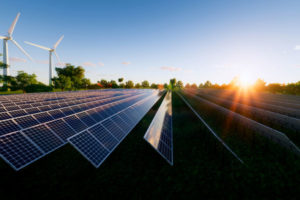As the renewable energy revolution grows, NIMBYism — where local residents resist the development of some kind in their ‘neighbourhood’ — has increasingly become a threat. There are numerous reasons for this. Chief among them is that renewable energy production is decentralized.
Relative to natural gas, coal, or other hydrocarbon power plants, wind turbines and solar panels are more spread out, visible, and plentiful. While decentralization comes with many benefits, such as improved energy resilience, it also leaves projects vulnerable to well-organized and funded NIMBY groups. There are, however, some actions wind and solar developers can take to placate NIMBYism and build a coalition of community support to boost the success rate of renewable energy projects.
One of the quickest ways developers can sink a project before it’s even under construction is by imposing the development without notice or consultation with the local community. While it’s easy to criticize and write off NIMBY activists as hypocritical, counterproductive, or disingenuous, doing so only mobilizes and further entrenches opposition. Instead, renewable energy developers should engage community concerns head-on in the spirit of ESG, or ‘environment, social, and governance,’ representing responsible corporate principles. Additionally, developers should seek to build a coalition of supporters as early as possible in the project. Social capital is a precious resource, after all.
There tend to be three recurring NIMBY themes regarding wind and solar energy: land-use implications, wildlife concerns, and aesthetic/property value impacts. Beginning with land use, opposition to renewable energy at the local level is often framed as a necessity to protect farmland. But this is a false dichotomy that pits farmers against developers unnecessarily. As we’ve written about before, agriculture and renewable energy both benefit from each other.

The “not in my backyard,” or “NIMBY” phenomenon represents a challenge to the rapidly growing wind and solar industries.
As a rule of thumb, renewable energy projects are best located on unproductive land or integrated into existing agricultural operations. After all, maintaining local food sources is a legitimate concern, one which will grow in importance as climate change threatens food security. Developers should communicate the reasons for selecting a specific site, along with plans to mitigate environmental degradation.
Wildlife concerns have turned a small but vocal faction of the environmental movement against renewable energy under the guise of species and land protection. While there are certain areas of biodiversity that should remain undeveloped, blocking renewable energy projects because of land conservation ignores the fact that the greatest threat to global ecosystems is climate change, not solar or wind power.
The impact of wind energy on bats and birds is frequently used as justification for environmental groups’ NIMBY attitudes.
Yet, a study analyzing the U.S. and Europe found that wind energy adoption resulted in fewer bird deaths thanks to pollution mitigation. Per 1GWh of fossil fuel power, researchers estimated 5.2 bird deaths. For wind energy, this number fell to just 0.3, a marked reduction. According to the LSE’s Research Institute on Climate Change and the Environment, “the benefits for wildlife of mitigating climate change are considered by conservation [authorities]… to outweigh the risks, provided that the right planning safeguards are put in place, including careful site selection.”
Without adequately engaging communities to address common concerns — which are made worse by online misinformation and disingenuous actors — renewable energy developers can be overrun by resistance.
Take the recently cancelled Battle Born Solar Project near Las Vegas. Set to be installed on the Mormon Mesa rock formation, this installation would have been the U.S.’s largest. Its total capacity would have represented 10% of Nevada’s entire energy grid — enough to power more than 800,000 homes. The project would have also led to a sizable reduction in emissions, as the state sources most of its energy from natural gas. But, due to wildlife, land conservation, and tourism concerns, the project was blocked. And this is a more common fate than might initially appear.

Ground-mounted systems are a cost-effective option for businesses with rooftops that are not suitable for solar or that are too small to meet electricity needs.
According to a U.S. Chamber of Commerce report, NIMBYism kills almost half of all proposed renewable energy projects (45%). This clearly flies in the face of the enormous and time-sensitive challenge of climate change.
Better communication and more direct intervention with communities can help improve the success rate of renewable energy installations. When projects feel imposed, they often amass resistance that would have otherwise not existed. A direct line of communication with residents also provides an opportunity to tout the localized benefits of renewable energy: cleaner air for families, cheaper electricity rates, local GDP and employment boosts, and energy independence and resilience.
The final common NIMBY challenge surrounds property values and environmental aesthetics. But once again, straightforward communication of well-documented research can alleviate this problem.
According to peer-reviewed studies in the Canadian Journal of Agricultural Economics, wind turbines have no consequential impact on nearby property values. An Ontario Municipal Property Assessment concurred with these results, finding “no statistically significant impact on sale prices of residential properties in market areas resulting from proximity to a wind turbine.”
While some may dislike the physical form of wind or solar installations, when compared to fossil fuel power plants at a similar distance, the appearance is relatively benign. And according to a study at the University of Delaware, most individuals tend to agree.
NIMBYism is a threat to renewable energy because it pulls together a multifaceted and often well-organized group of stakeholders. When farmers and agricultural workers, environmental groups, and real estate and property owners come together, life for developers becomes immensely difficult. But the good news is that NIMBYism as an attitude isn’t particularly challenging to placate, as long as developers are proactive in their mindset.
By eliminating the appearance of renewable energy imposition, reaching out to community stakeholders early in the development process, and highlighting the core community benefits of the technology, developers can save themselves time and money in litigation, development, and security costs, all while increasing the likelihood of the project being a success.













Comments